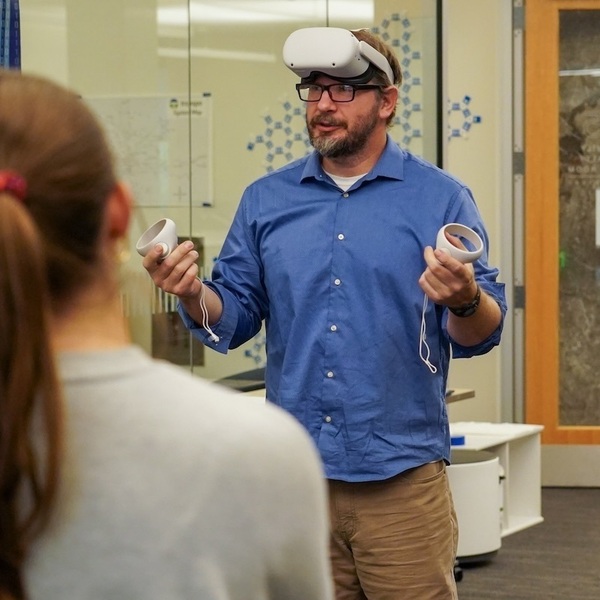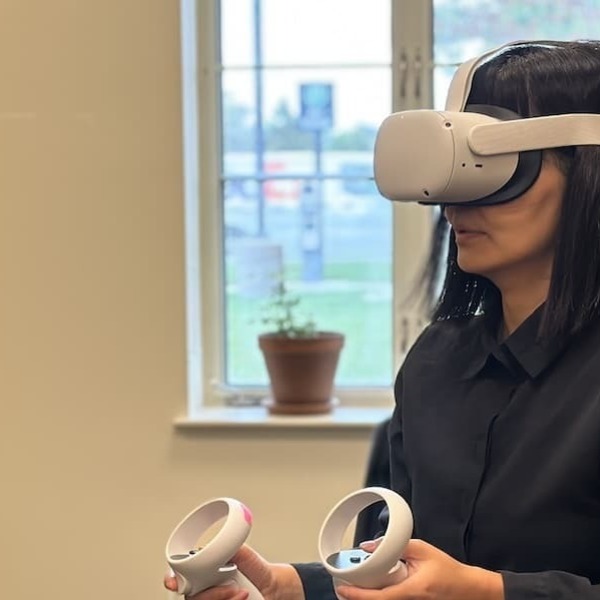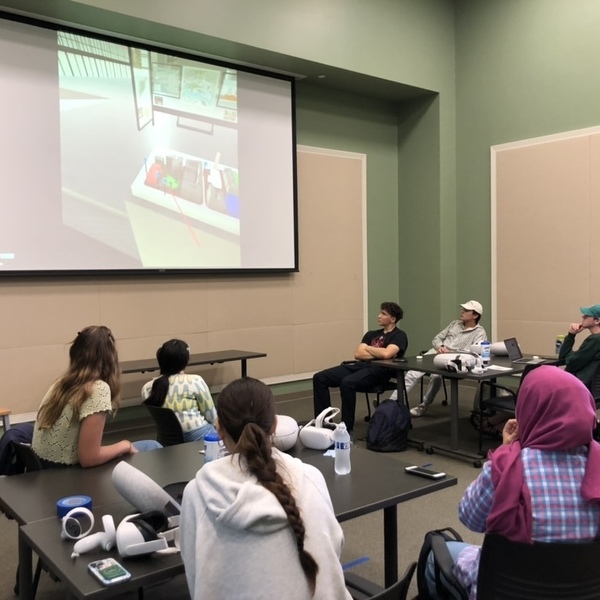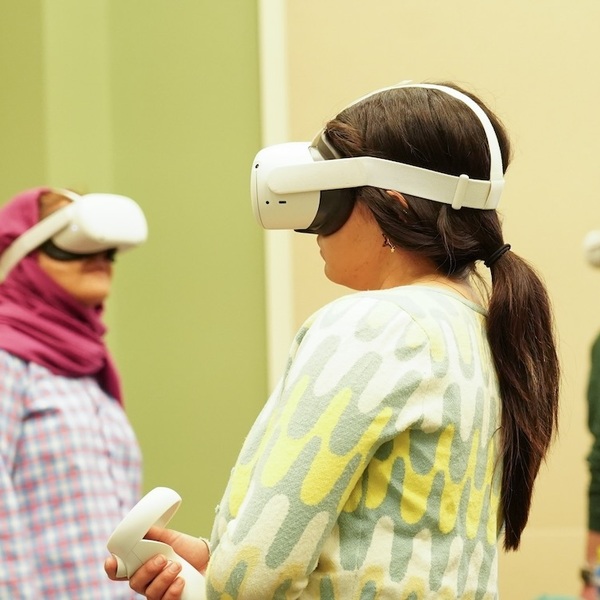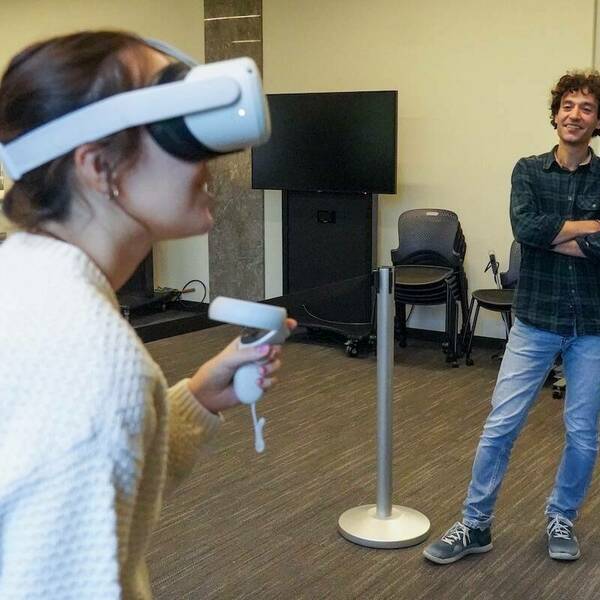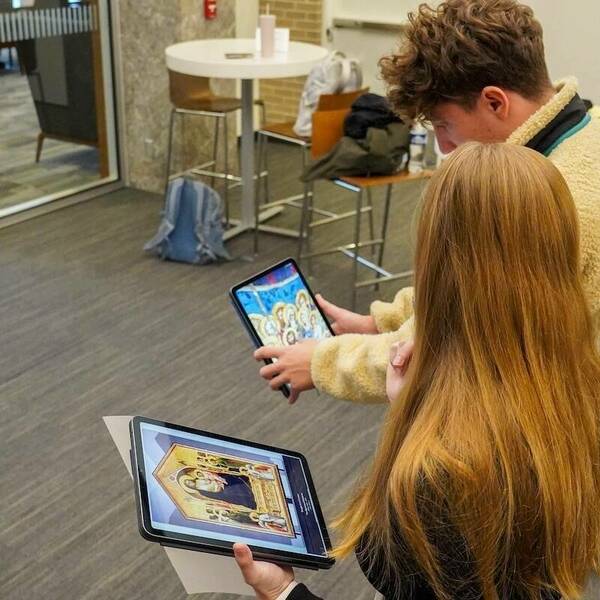Extended Reality (XR) for Learning
Fall Break VR Bootcamp for Undergrads
With educational environments evolving to incorporate more interactive and immersive technologies, extended reality (XR) provides a platform for deep, experiential learning that transcends traditional classroom boundaries.
Realizing XR’s true potential in education requires going beyond just the technology; its integration into the learning process should be shaped by an understanding of pedagogical principles, user experience, and the unique opportunities that XR can bring to educational settings.
Notre Dame Learning’s XR for Learning Working Group is a collaborative team of learning designers, media and motion graphics designers, and developers who seek to explore and expand the use of XR technologies in teaching and learning. Our mission is to bridge the gap between technology and education, fostering an environment where XR’s affordances can be effectively utilized to enhance student learning.
Our services include support in the design and development of XR learning experiences, consultation on best practices in XR pedagogy, assistance with technical aspects of XR technology, and help in research and evaluation to assess the impact of XR on learning outcomes.
By harnessing the power of XR, we aim to create immersive learning environments that not only captivate and engage but also deeply educate, preparing Notre Dame students for a future where digital and physical realities mix to an ever-growing extent.
Did You Know?
Extended reality (XR) is an umbrella term that encompasses virtual reality (VR), augmented reality (AR), and mixed reality (MR). From the Adobe website:
- A VR experience consists of entering a computer-generated simulation where a headset completely blocks your view of the real world, immersing you in entirely virtual worlds.
- AR experiences layer digital objects onto the real world in front of you. AR provides digital content that supplements what is before your eyes and that you see either through special AR glasses or through the camera on your phone, tablet, or other device.
- VR and AR converge in mixed reality, with MR describing environments in which real and virtual subjects and objects interact in real time—and in which you can interact with both real and virtual components.
Source: Adobe. What is mixed reality?
-

HafenCity VR Lesson 4
2024-07-10
A collaboration with Ming Hu, an associate professor of architecture, as part of our Digital Learning Sprints program led to the creation of five virtual reality lessons, delivered via headsets, that allowed students in her course on carbon-neutral development to explore various aspects of HafenCity in Hamburg, Germany. Here, in lesson four, students learned about HafenCity’s sustainable energy infrastructure.
